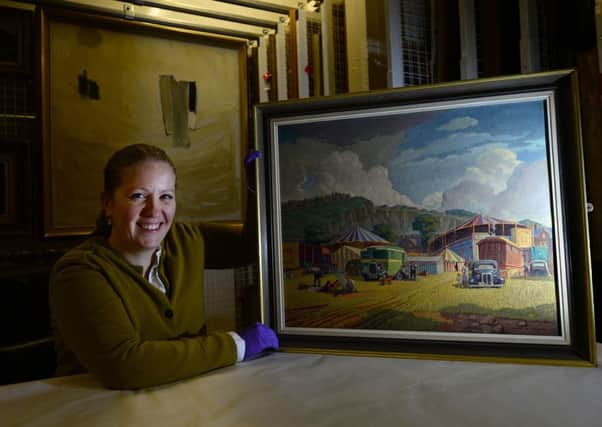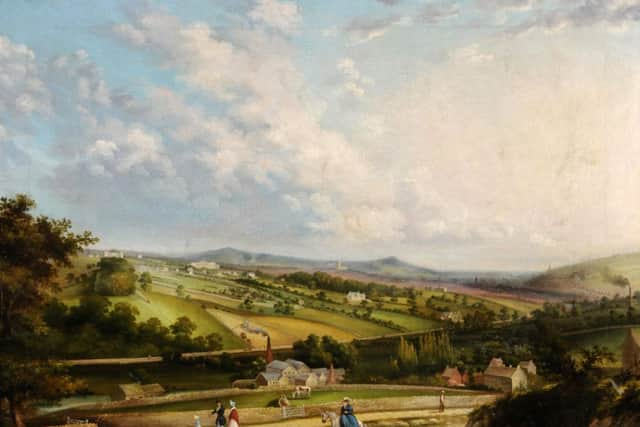Sheffield: More than Meadowhall


The other day, in a hotel bar in Istanbul, an Australian journalist asked me where I live. Sheffield, I said. “But you’ve still got your clothes on!” she shrieked. “The Full Monty! Great film... Shame about Sheffield.”
Oh dear. Almost 20 years on from the heartening comedy about unemployed steelworkers turning their hand to stripping and their backsides to the audience, long-outdated images of the city’s industrial dereliction still linger in people’s minds halfway across the world. As some predicted when it was released, it was the feel-good film that made Sheffield look bad.
Advertisement
Hide AdAdvertisement
Hide AdLouisa Briggs has been aware of the Full Monty factor while curating Picturing Sheffield, an exhibition about the city’s changing landscapes and Sheffielders’ relationship with them that has just opened at the Millennium Gallery.


“When I first started working in Sheffield, I had conversations with people about The Full Monty,” she says. “I told them that the city wasn’t like that, but it’s an image that persists in people’s minds.”
That image is accurately reflected in one of the bleakest, most uncompromising of the 100 or so pictures and photographs on show – Sheffield-born Derrick Greaves’ brown, black and grey study of a gaunt industrial landscape: derelict factory, snaking terraces, sickly skies. Dating from 1953, it’s a vision of unmitigated gloom and doom, yet, almost perversely, the city’s gallery-going public chose it as one of their favourite pictures a couple of years ago.
Belching factory chimneys, turbid canals, squalid slums... can’t get enough of ’em. “Even though industry has declined, many residents still think of themselves as being part of an industrial city,” says Louisa, Museums Sheffield’s former curator of visual art and more recently arts officer at Haworth’s Brontë Parsonage Museum.
Advertisement
Hide AdAdvertisement
Hide AdGreaves’ bleakness is matched by Bill Brandt’s grim, soot-black photographs of Sheffield terraces at the height of the Depression. But there’s an antidote in Colin Coates’ 1950s canvas of similar back streets in the still-industrial East End: a glimpse of the world of corner shops and cobbles and tightly-packed terraces with donkey-stoned doorsteps.
It’s reassuringly nostalgic, reflecting a warm sense of community that, odd as it sounds, may partly be a product of the comradeship at the heart of the city’s traditionally radical politics. Such nostalgia also hints, however, at Sheffielders’ localism, their tendency to look inwards rather than outwards, backwards rather than forwards. I know. I’m one myself.
That tendency is reflected in one of the most recent pictures, Jonathan Wilkinson’s architect-precise 2007 study of “The Egg Box”, a now-demolished concrete 1970s extension to the Victorian Town Hall. It was widely reviled, but Louisa Briggs sees it as one of a number of “quite brave structures” whose demolition has left them lingering affectionately as “lost and imagined places” in the city’s collective memory. She singles out the monolithic blocks of streets-in-the-sky council flats and the “Hole in the Road”.
As for the streets-in-the-sky... Roger Mayne’s 1970s photographs capture their strange blend of brooding alienation and community verve. And their angular walkways could hardly have a more fitting memorial than Mandy Payne’s radical new depictions of them: she aerosol-sprays the images on concrete slabs.
Advertisement
Hide AdAdvertisement
Hide AdAs Louisa points out, the Sheffield that emerges from the exhibition is a city of contradictions. “There’s such an industrial heritage, for instance, but we still refer to ourselves as ‘the biggest village in England’,” she says.
Thanks to its many parks and woods, Sheffield is reckoned one of Europe’s greenest cities. You can still find corners that suggest the pastoral cow-and-sheep-strewn beauty of, say, Thomas Creswick’s landscape of Hillsborough in the 19th century.
Industry and nature have always co-existed. Fifty years ago, before any inkling that steel production’s days were numbered, Jack Kettel’s study of a blast furnace has a pheasant strutting across the foreground. For context, one of the earliest pictures here is the young JMW Turner’s 1797 watercolour panorama of the city from the south. There’s plenty of green space around the cluster of houses and church spires he depicts. More surprisingly, if you compare the picture with the same view today, there still is.
Tower blocks may now dwarf the spires, and the blue dome and minarets of a mosque may make a powerful visual statement, but that’s all in the foreground. The background is still the brooding moors that loom behind Turner’s city. They give credence to another description of Sheffield as “a dirty picture in a golden frame”.
Advertisement
Hide AdAdvertisement
Hide AdPerhaps nothing sums up the city’s ambivalent character better than a selection of canvases from the Second World War. To set against Henry Rushbury’s stark vision of the Blitz-damaged city centre, Byron Winston Warmby shows a wartime fair in a city park. It’s a bright, sunny, settled scene, with no inkling of the bombed devastation festering down the road.
It’s the industrial scenes that leave the most vivid impression, though, recalling hard work in grim places. “It’s interesting how passionate people can be about workplaces that were so dark and dangerous,” says Louisa. “And in the 21st century it’s hard to realise how much noise there must have been.”
Doris Walsh, a veteran Sheffield cutler, once described that noise to me, the noise of the drop hammers and the oil-fired engines. “It was boom, boom, boom, like a big heart beating,” she said.
This exhibition touches that heart.
• Picturing Sheffield, Millennium Gallery, to April 12, www.museums-sheffield.org.uk